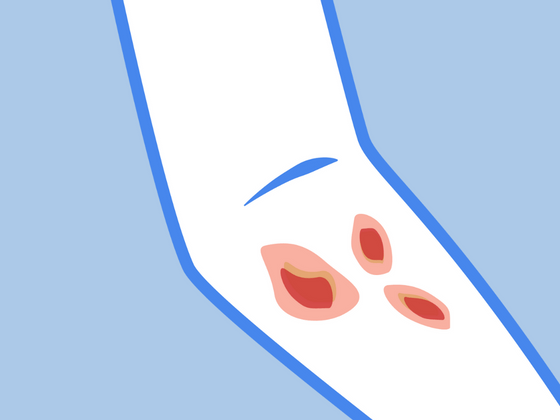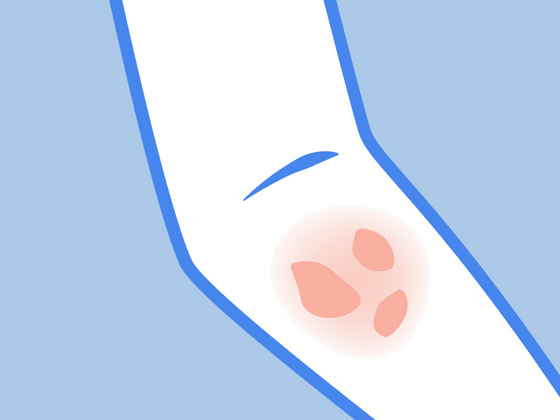Lupus lichenoid dermatitis is a rare skin condition that looks like both lupus and lichen planus. It can cause red, scaly patches that are often itchy and sometimes mistaken for other rashes.
In this blog, we're going to explore:irritated skin
-
What lupus lichenoid dermatitis is
-
Common symptoms and causes
-
What natural treatments can help
Keep reading to learn how to recognize and manage this unusual skin condition.
What is Lupus Lichenoid Dermatitis?
Lupus lichenoid dermatitis is a type of rash that shows signs of both cutaneous lupus erythematosus (CLE) and lichen planus. It's part of a group of skin conditions linked to the immune system, including discoid lupus erythematosus (DLE) and subacute cutaneous lupus erythematosus (SCLE).
Common Signs and Symptoms
The rash typically appears on the face, arms, palms, or soles. It may look:
-
Red or purple
-
Flat or slightly raised
-
Itchy or irritated
-
Scaly, sometimes with dark marks after healing (especially in darker skin)
These lichenoid eruptions often resemble other common skin rashes, which can make diagnosis challenging.
What Causes It?
The exact cause isn't fully understood, but experts believe it happens when the immune system mistakenly attacks the skin — similar to what happens in systemic lupus erythematosus (SLE). This immune reaction causes inflammation, known as lichenoid interface dermatitis, especially around the basement membrane and hair follicles.
In some cases, certain drugs may trigger the rash, making it part of a drug-induced lichenoid dermatitis pattern. It can also appear in people who already have lupus or other autoimmune conditions.
Who Gets It?
Lupus lichenoid dermatitis is rare, but it can affect people of any age. It's more common in females and those who already have other forms of lupus. The rash might start suddenly, and in some cases, it appears after taking certain medications.
It can also affect children, though that's less common. For young ones dealing with sensitive skin conditions, specialized eczema cream for babies may be helpful. In darker skin tones, the rash may leave behind dark spots (post-inflammatory hyperpigmentation) after healing.
How to Soothe Your Skin Naturally
If you're dealing with lupus lichenoid dermatitis or any itchy, inflamed skin condition, gentle care is essential. While medical treatments are often necessary, some natural remedies like gentle eczema cream can offer added comfort and help calm irritated skin. Below are a few skin-friendly products and ingredients that may support healing and reduce discomfort.
Cool Inflamed Skin
This Hot Skin Soother is ideal for soothing hot, red, or weepy rashes — especially those triggered by sweat or heat. It's great for areas like skin folds, underarms, and creases where moisture can build up and irritation flares. Not only does it cool and calm inflammation, but it also helps fight bacteria, yeast, and fungus, making it ideal for angry, oozing eczema or seborrheic dermatitis.
Use a Natural Moisturizer
Crafted for deeply sensitive and inflamed skin, this Soothe My Skin Emu Oil Cream harnesses the power of pure emu oil to moisturize, calm, and repair. It's especially helpful for conditions like eczema, dermatitis, rosacea, and psoriasis. Another natural option to consider is beef tallow cream, which provides deep nourishment for sensitive skin. Lightweight yet deeply nourishing, it helps reduce redness and discomfort while promoting a healthy skin barrier— perfect for anyone dealing with chronic skin dryness or irritation.
Embrace the Healing Power of Manuka Honey
Gentle, rich, and deeply hydrating, this upgraded Nourish + Hydrate Manuka Balm is packed with manuka honey and dermatologist-approved ingredients. It's non-sticky and non-irritating, designed to lock in moisture while soothing inflamed skin. Ideal for all ages and skin types, this balm is a go-to for dry patches, irritation, and overall skin barrier repair— plus, it comes in eco-friendly packaging.

Take Care of Your Skin Today
If you're experiencing a persistent rash or have a history of lupus erythematosus, don't ignore your skin condition. Getting early treatment can help the rash disappear and prevent long-term damage.










